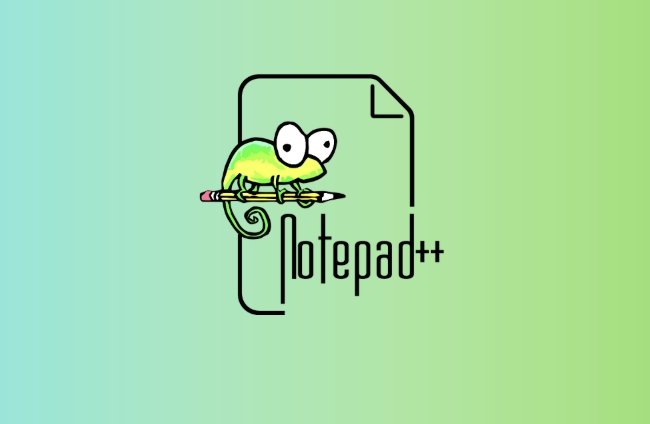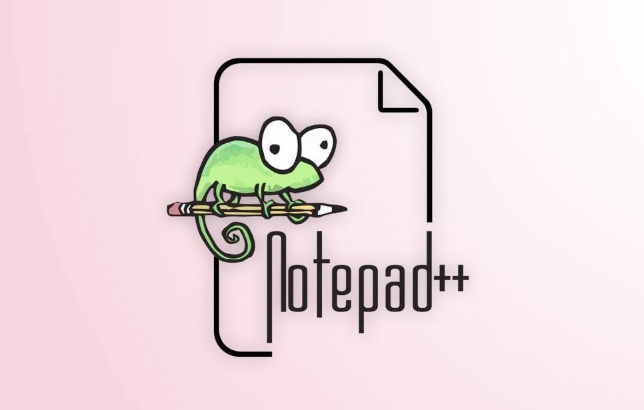Open Notepad and go to Search > Find in Files (Ctrl Shift F). 2. Enter the text to find and replace, specify file filters (e.g., *.html), set the directory, and choose search mode (Normal or Regular expression). 3. Check options like Match case or Match whole word only if needed, and enable In hidden folders/subfolders when necessary. 4. Click Replace in Files and confirm the action. 5. Always back up files before proceeding, as global changes cannot be undone. 6. Use Find in Files first to preview matches and avoid unintended replacements. 7. Save files manually after replacement or ensure Auto-save is enabled. 8. For special characters, confirm files are in UTF-8 encoding via Encoding > Convert to UTF-8. 9. Use Regular Expression mode for advanced patterns, such as replacing id= followed by digits with id=999 using Find: id=(\d ) and Replace: id=999. 10. Resolve "No files found" errors by verifying the directory path, filters, and exclusion settings. This method provides an efficient GUI-based solution for multi-file find-and-replace in small to medium projects.

If you need to find and replace text across multiple files using Notepad , you're in luck — it has a built-in feature for exactly that. Here's how to do it efficiently and avoid common pitfalls.

? How to Find and Replace in Multiple Files
Open Notepad
-
Go to Search > Find in Files (or press
Ctrl Shift F)
-
Fill in the following fields:
- Find what: The text you want to search for
- Replace with: The replacement text
-
Filters: File types to include (e.g.,
*.txt,*.html,*.js, or leave blank for all) - Directory: The folder where your files are located
- In hidden folders/subfolders: Check if needed
- Search Mode: Use "Normal" unless you're using regex (then choose "Regular expression")
-
Click Replace in Files

Confirm the action in the popup
?? Important: Always back up your files before doing bulk replace — mistakes can’t be undone globally.
? Tips for Better Results
Use filters wisely:
If you only want to change.htmlfiles, type*.htmlin the Filters box.
For multiple types:*.html; *.php; *.jsCase sensitivity:
Check Match case if you want exact case matching.Whole word only:
Use Match whole word only to avoid partial matches (e.g., replacing "cat" won’t change "category").-
Use Regular Expressions (Regex):
Enable Regular expression mode for advanced patterns.
Example: Replace all digits after "id=" with regex:- Find:
id=(\d ) - Replace:
id=999
(Note: Use\1to keep original groups if needed)
- Find:
?? Common Issues & Fixes
-
"No files were found"?
Double-check:- The directory path is correct
- Filters aren’t too restrictive
- You didn’t accidentally check "Exclude" options
Changes not saved?
After replacing, the files are modified but you must save them manually if Notepad prompts. Or ensure "Auto-save" is on.Encoding problems?
If files have special characters (like é, ü), make sure they’re in UTF-8 encoding. You can convert via Encoding > Convert to UTF-8 before replacing.
? Pro Workflow: Search First, Then Replace
- Use Find in Files (without replacing) to preview matches
- Review results in the bottom panel
- Only proceed with Replace in Files when confident
This avoids accidental bulk changes.
Basically, Notepad makes multi-file find-and-replace fast — just be careful, use filters, and always back up. It’s not as powerful as command-line tools like sed or grep, but for GUI-based editing, it’s solid for small to medium projects.
The above is the detailed content of Notepad find and replace in multiple files. For more information, please follow other related articles on the PHP Chinese website!

Hot AI Tools

Undress AI Tool
Undress images for free

Undresser.AI Undress
AI-powered app for creating realistic nude photos

AI Clothes Remover
Online AI tool for removing clothes from photos.

Clothoff.io
AI clothes remover

Video Face Swap
Swap faces in any video effortlessly with our completely free AI face swap tool!

Hot Article

Hot Tools

Notepad++7.3.1
Easy-to-use and free code editor

SublimeText3 Chinese version
Chinese version, very easy to use

Zend Studio 13.0.1
Powerful PHP integrated development environment

Dreamweaver CS6
Visual web development tools

SublimeText3 Mac version
God-level code editing software (SublimeText3)

Hot Topics
 How do I make Notepad always open in maximized mode?
Jul 08, 2025 am 01:17 AM
How do I make Notepad always open in maximized mode?
Jul 08, 2025 am 01:17 AM
YoucanmakeNotepadopeninmaximizedmodebydefaultthroughtwomethods.1.CreateashortcutwiththerunstatesettoMaximized,ensuringNotepadopensfull-screenwhenlaunchedthroughthatshortcut.2.UseanAutoHotKeyscriptthatautomaticallymaximizesNotepadwindowssystem-wide,re
 How can I change Notepad's icon in Windows?
Jul 06, 2025 am 12:33 AM
How can I change Notepad's icon in Windows?
Jul 06, 2025 am 12:33 AM
WindowsdoesnotallowchangingNotepad’sicondirectlythroughsettings,butitcanbecustomizedviashortcutsoradvancedregistryedits.1.Tochangetheshortcuticon,createadesktopshortcutfornotepad.exe,right-clickit,selectProperties,clickChangeIcon,andchooseorbrowsefor
 How do I replace all occurrences of a text string in Notepad?
Jul 02, 2025 am 12:01 AM
How do I replace all occurrences of a text string in Notepad?
Jul 02, 2025 am 12:01 AM
ToreplacealloccurrencesofatextstringinNotepad,usethebuilt-inFindandReplacefeaturebypressingCtrl H,enteringthetexttofindandreplaceintheirrespectivefields,thenclickingReplaceAll;forcase-insensitiveorregex-basedreplacements,useNotepad .1.PressCtrl Htoo
 How do I change the text encoding in Notepad (e.g., UTF-8, ANSI)?
Jul 07, 2025 am 12:38 AM
How do I change the text encoding in Notepad (e.g., UTF-8, ANSI)?
Jul 07, 2025 am 12:38 AM
To change the text encoding in Notepad, select it via the Encoding option in the Save As menu. The specific steps are as follows: 1. After opening the file, click "File>Save As"; 2. Find the "Encoding" drop-down menu at the bottom of the dialog box; 3. Select the required format such as UTF-8 or ANSI; 4. Save as the original file or new file. Different encoding uses vary: ANSI is suitable for legacy systems, UTF-8 is suitable for web and cross-platform compatibility, Unicode (UTF-16LE) is used for Windows applications, and UTF-8 has no BOM for certain tool preferences. Check the current encoding to view the drop-down menu display by opening Save As again. Although Notepad has limited functionality, basic editing
 Can Notepad be used to create or distribute malware?
Jul 04, 2025 am 12:01 AM
Can Notepad be used to create or distribute malware?
Jul 04, 2025 am 12:01 AM
Notepad itself cannot create or spread malware directly, but it can be abused as a tool for writing malicious scripts. ① It can only edit plain text files such as .bat, .vbs, etc. If these files contain executable code, they may be used for malicious purposes; ② For example, using .bat to delete the content of the specified directory, disguising it as a game to induce clicks to run; ③ Preventive measures include not running unknown scripts, enabling firewall anti-virus software, restricting user permissions, and disabling some script types. In real cases, beginners or attackers use notepad to write disruptive scripts, so the key is how the user uses it rather than the tool itself.
 How can I prevent Notepad from automatically adding a .txt extension when saving?
Jul 13, 2025 am 01:38 AM
How can I prevent Notepad from automatically adding a .txt extension when saving?
Jul 13, 2025 am 01:38 AM
To prevent Notepad from automatically adding .txt extensions, wrap the file name in quotes when saving and select All Files in the Save Type drop-down menu. The specific steps are as follows: 1. Enter a quoted name in the file name field of the "Save As" dialog box, such as "config"; 2. Select "All Files" from the "Save Type" drop-down menu to disable the behavior of automatically adding extensions; 3. Note that Windows may hide known extensions. You can check "File Name Extension" in the "View" tab of File Explorer to confirm that the saving is correct. Follow these steps to ensure that Notepad saves files in the specified format without automatically adding the default .txt extension.
 How do I use case-sensitive search in Notepad?
Jul 15, 2025 am 12:44 AM
How do I use case-sensitive search in Notepad?
Jul 15, 2025 am 12:44 AM
Notepad does not support direct case-sensitive searches, but can be achieved through alternative tools or workarounds. 1. Notepad is case-sensitive when searching by default, and the settings cannot be changed; 2. Use Notepad to truly realize case-sensitive search, by checking the "Case-sensitive" option; 3. Native Notepad can assist in marking target text through replacement functions, but the effect is limited; 4. It is recommended to use more powerful editors such as Notepad or VSCode for long-term needs.
 Can I create a custom Notepad shortcut with specific command-line arguments?
Jul 14, 2025 am 12:51 AM
Can I create a custom Notepad shortcut with specific command-line arguments?
Jul 14, 2025 am 12:51 AM
Yes, you can create custom notepad shortcuts with command line parameters. First, right-click on the desktop or folder, select "New" > "Shortcut", and enter notepad.exe in the location bar; then right-click the shortcut and select "Properties" and add command line parameters in the "Target" field, such as: C:\Windows\System32\notepad.exeC:\Users\YourName\Documents\example.txt to open a specific file; although Standard Notepad has limited support for command line options, you can still implement functions such as opening files directly, opening files in read-only mode, and using wildcards to open multiple files at once;








